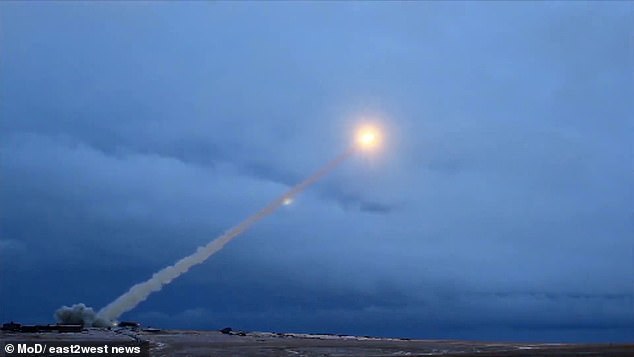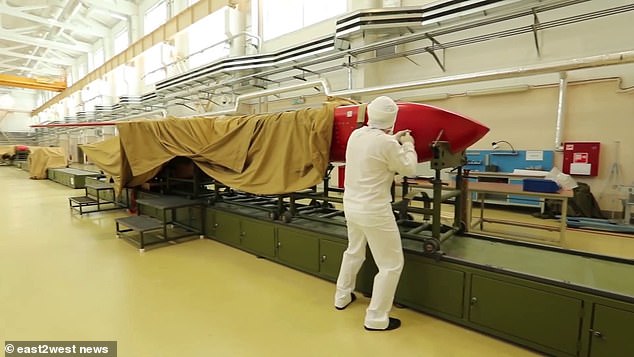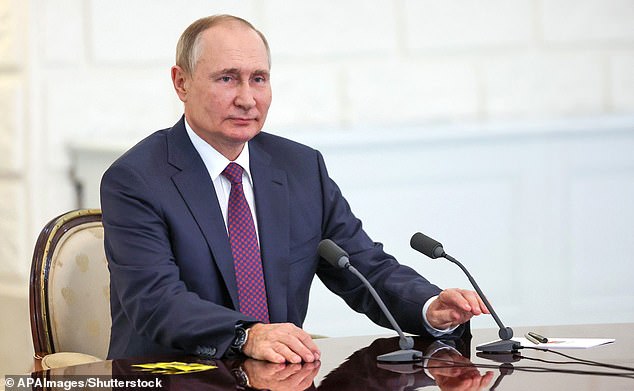Fears Putin is about to test his terrifying ‘Flying Chernobyl’ nuclear missile capable of flying for weeks on end
Fears Putin is about to test his fearsome ‘Flying Chernobyl’ nuclear missile, which can fly for weeks
- If so, it will be the 14th test of the Burevestnik – also known as the Flying Chernobyl
Fears are growing that Russia is about to test a new “miracle” nuclear missile that could fly for weeks while it probes weaknesses in Western defenses.
If so, it will be the 14th test of the Burevestnik – also known as the Flying Chernobyl. The remaining thirteen attempts are considered failed so far.
One unconfirmed theory is that it is being prepared this week as a 71st birthday present for Vladimir Putin.
Satellite images from a remote polar base show preparations for the launch, The New York Times reports. A test may even have taken place.
“US surveillance aircraft have also been tracked in the area over the past two weeks, and aviation alerts have warned pilots to avoid nearby airspace,” the newspaper reported.
Fears are growing that Russia is about to test a new ‘miracle’ nuclear missile. In the photo: Russian dictator Vladimir Putin

Russia’s state news agency released a video in 2019 claiming to show a test of the Burevestnik missile (photo)

The remaining thirteen attempts are considered failed so far. Pictured: An engineer working on the rocket in the top-secret Russian facility in 2019
A 2019 test led to the deaths of seven people who tried to rescue the crashed, top-secret missile. Putin called them “national heroes” without explaining details of their deaths.
The Burevestnik is seen by the Russian dictator as a groundbreaking ‘doomsday’ weapon with an unlimited range.
The Kremlin views it as a low-flying “stealth” cruise missile that cannot be intercepted by existing Western air defenses and can deliver nuclear warheads anywhere in the world.
Putin has called it “a radically new type of weaponry” with “unlimited range and unlimited maneuverability.”
“It’s exotic — it’s dangerous in the testing and development phase,” said Daryl G. Kimball, executive director of the Arms Control Association, according to The New York Times.
According to a report by the Nuclear Threat Initiative – a non-profit arms control group – Russia had conducted 13 known tests between 2017 and 2019, all of which were unsuccessful.
Putin made the weapon public in 2018, one of five groundbreaking missile systems that he said were superior to Western models.
The Moscow Times said the Burevestnik had been nicknamed the ‘Flying Chernobyl’.
“Previous launch attempts have ended without success,” the news channel said.

A 2019 test led to the deaths of seven people who tried to rescue the crashed, top-secret missile. Putin called them “national heroes” without explaining details of their deaths
‘According to US intelligence, the missile never managed to fly further than 35 km (22 miles); the longest flight lasted just two minutes.’
The seven who died in 2019 were all from Sarov, a closed nuclear city where foreigners are not allowed to enter.
The rocket is believed to be launched by a solid fuel rocket engine.
A small nuclear reactor is then activated during the flight, potentially allowing it to remain aloft indefinitely and threaten Western countries.
The testing site is believed to be Novaya Zemlya. Russian Defense Minister Sergei Shoigu visited the Arctic archipelago last month
Putin, who celebrates his 71st birthday on Saturday, is likely to announce he will run for a new six-year term in elections scheduled for March.
Russian elections are routinely manipulated, meaning his re-election is a foregone conclusion.
